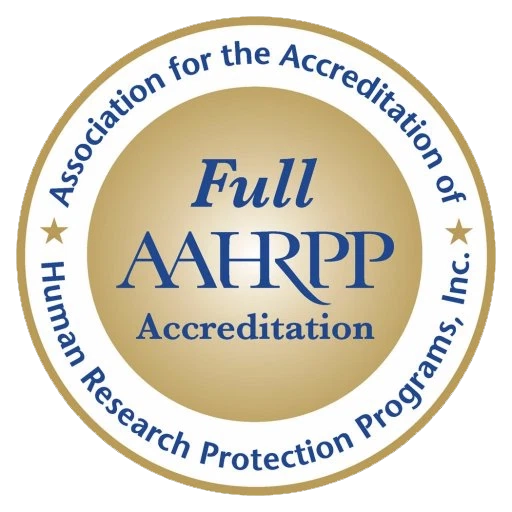Concerns of the Rare Disease Patient Community: 7 Critical Instances Where FDA Guidance Responds (or Doesn’t)
Sabai IRB Chair Stephanie Solomon Cargill attended a series of FDA engagement sessions, gathering valuable insights on how the latest guidance accords with the concerns, interests and insights of rare disease communities.
rare disease challenges identified by the fda
Rare disease communities (including patients, families and official organizations) are highly motivated and heavily invested in achieving successful treatments, particularly as rare disease treatment research faces unique barriers to meeting general requirements for FDA approval.
The FDA itself has recognized the compelling need for rare disease research and the unique challenges it entails in two publications: original guidance published in 2020 and the updated 2023 guidance.
In its latest guidance for rare disease research, the FDA names several of these challenges:
- Limited scientific knowledge
- Poorly understood natural history data
- Sample size constraints
- Lack of drug development expertise
In the interim between the original and updated guidance, the FDA launched numerous virtual series conducted through the FDA’s Center for Biologics Evaluation and Research (CBER) Office of Tissues and Advanced Therapies (OTAT) and Office of Therapeutic Products (OTP).
Engaging with the rare disease community of patients and their advocates, in these forums FDA representatives shared information and asked for insights, recommendations and feedback on various issues. These efforts included a town hall series, listening sessions and workshops.
Listening to the rare disease community
With the release of the FDA’s updated guidance is it worth reflecting on the extent to which the 2023 guidance is responsive to the concerns raised by rare disease communities in these listening sessions.
The considerations listed below in no way exhaust the complex and nuanced concerns that rare disease community stakeholders voiced. While one article cannot do justice to all the thoughts raised by these public sessions, it’s helpful to analyze the recent guidance in light of several key critiques and how the guidance is responding—or not responding—to them.
7 Key Issues Raised by Rare Disease Communities
Critique #1: Placebo And Sham Procedures; Suggest Innovative Study Designs Instead.
Patients and advocates voiced strong ethical objections to designing rare disease studies that randomize to placebo or sham procedures. Although willing to undertake risks for even a small possibility of benefit, they do not perceive placebos or sham procedures to be an ethical option, especially when time is of the essence and participating in one study could preclude them from participating in others.
This contrasts with the recommendation in the 2020 FDA guidance, which recommends placebo controls “when feasible” (FDA 2020, 7).
Instead, patients suggested using natural histories as controls, or more creative study designs where every participant is given some intervention. They also suggested other innovative designs like platform, umbrella, or basket trials to compare different experimental treatments for the same disease, or the same treatment for different diseases as part of one trial.
Yes, such designs pose regulatory and methodological challenges. But they also have the potential to address the specific difficulties inherent to rare disease research. In fact, the 2020 Guidance admits that alternative trial designs that maximize data from a small and heterogenous group “should be considered” (FDA 2020, p. 8).
Critique #2: Time it takes for clinical endpoints, suggests surrogate endpoints.
Due to the seriousness and often degenerative nature of many rare diseases, patients and their advocates also critiqued certain choices of clinical endpoints that took a long time to reach. In these cases, there were suggestions for surrogate endpoints that could establish efficacy sooner, expediting the research process for those desperate for drug development. The 2020 Guidance mentions the use of sufficiently justified surrogate endpoints to justify accelerated approval (FDA 2020, 10-11).
Critique #3: Overly cautious risk assessment when no alternatives and serious disease.
A common critique of current study design is that the considerations of acceptable risks do not reflect the desperate and often degenerating situation of many patients with rare diseases.
While minimal risk is always optimal, rare disease patients emphasized that when faced with a serious disease and no existing effective clinical alternatives, they should be permitted to take on what they consider acceptable risks. In such circumstances, a patient’s standard for acceptable risk may be higher than that of sponsors and review bodies.
Critique #4: Excluding more progressed patients (non-ambulatory, etc.)
An issue that arose several times was the prioritization, or even exclusive access to studies for patients with less advanced disease. More progressed patients argued they could still benefit from study interventions, and that understanding the impact of interventions on patients with more advanced disease is vital to progress in the field. The 2020 FDA Guidance specifically encouraged enrolling patients with earlier stage disease in rare disease research (FDA 2020, p.6).
Critique #5: Follow-ups that exclude from other trials.
An important point raised by patients in these venues was that while they acknowledged the importance of long-term follow-up for participants in rare disease research, they sometimes found that being in follow-up excluded them from participating in more trials. In the absence of effective clinical alternatives, many patients with rare diseases rely on continuous trial participation to attempt to improve research as well as their personal disease trajectory. Being excluded for years after a study’s intervention has completed serves as a barrier to this.
Critique #6: Suggests patient engagement early.
While the rare disease community frequently acknowledged and appreciated the increasing avenues for patient engagement that the FDA and sponsors are incorporating into their processes, there was still concern that these avenues often engage patients too late in the study design process. The earlier patients are engaged, the more impact they have on the questions being asked, the design of the study and the way it is reviewed.
Critique #7: Reliance on clinical outcomes, suggests incorporating patient-reported outcomes.
Many patients challenged the relevance of using exclusively clinical outcomes to measure the effectiveness of gene therapy interventions and emphasized outcomes with more impact on quality of life from the patient perspective to be included. The 2020 Guidance gestures to the importance of patient experience: asking for patient experience data to be collected, and identifying aspects of the disease that are meaningful to the patient (FDA 2020, 11).
What's new in the 2023 FDA Guidance for Industry?
New insight #1: Emphasis on flexibility
One major insight from this new guidance is its emphasis on flexibility and case-by-case considerations of what is required for rare disease studies. “The FDA recognizes that rare diseases are highly diverse with varying prevalence, rates of progression, and degrees of heterogeneity. . .as such, no one program can be designed exactly like any other” (FDA 2023, 3).
This emphasis on study design flexibility specifically mentions potentially allowable adaptations desired by rare disease communities. In response to Critique #1, the new guidance allows study design flexibilities that (under certain conditions) can allow alternatives to using placebos or minimizing participant exposure to them. They also mention using natural history and registry-based studies to justify adapting the traditional design and phases of clinical trials.
Similarly, in response to Critique #2 (slow achievement of clinical endpoints) the new guidance allows that surrogate endpoints “may be considered” when clinical endpoints are not feasible.
In direct response to the challenge of how risk assessments were being made (Critique #3) the new guidance acknowledges greater risk and uncertainty may be acceptable when disease is serious, there are no acceptable alternatives, and “a substantial evidence standard has been met” (FDA 2023, 16-17).
Finally, “practical considerations” may allow the inclusion of a broader range of disease stages, including different severities of disease and different severities of secondary conditions to the primary disease. In addition, the guidance allows the possibility of auxiliary safety cohorts and expanded access consisting of patients with the disease who may benefit but don’t meet the study eligibility criteria. This responds directly to Critique #4 above, but unfortunately doesn’t address the concern about study participation exclusion (Critique #5). The exclusion issue does not seem to be acknowledged by extant guidance and should be addressed in the future.
New insight #2: Patient emphasis
The other major shift in this guidance is a fresh emphasis on patient involvement and patient-centered research, which was mentioned only briefly in the 2020 guidance. The 2023 guidance urges sponsors to engage with patient and caregiver concerns “early in the planning stages (FDA 2023, 12)”, responding directly to Critique #6 above. It also acknowledges that involving patients and caregivers “in the selection, development, or modification of existing clinical outcome assessment measures (FDA 2023, 13)” as well as assessing “aspects of the disease that are meaningful to the patient and caregivers (FDA 2023, 13)” can improve the chances of the program’s success, directly responding to Critique #7 above.
The new guidance also adds a section under “Additional Considerations” titled “Participation of Patients, Caregivers, and Advocates.” This new addition encourages sponsors to engage these stakeholders in numerous ways. This welcome emphasis acknowledges the expertise, agency and power of rare disease communities, and the vital role they can play in shaping the research that impacts them.

Looking Ahead: Flexibility in Real-World Conditions
The emphasis on flexibility acknowledges that rare disease research poses both practical and ethical challenges not shared by more traditional research approaches. Recognizing this makes space for the possibility of proceeding through the FDA process in different ways.
On the other hand, the notion of flexibility without clear understanding of the conditions under which it may be utilized could be unsatisfactory to both sponsors and patients, putting the burden on them to make the case for flexibility without adequate guidance on how to justify it.
The guidance indicates that the FDA will have the authority when and how to allow flexibility, based on evidence and arguments made by patients and sponsors, but with little clarity on what will constitute an acceptable threshold of justification. It also creates a “black box” situation where research situations are addressed individually, with no transparency about how and whether similar issues are treated consistently or inconsistently, or the possibility from learning from those who have come before.
It does appear most of the guidance focuses on the relationship between sponsors and these stakeholders, without clearly addressing whether, and how, these perspectives might impact the FDA review process itself. Given the significant role of flexibility in addressing the concerns of the rare disease community, it seems highly beneficial for these stakeholders to be at the table for some of these FDA determinations as well.
Participating in these ongoing conversations helps us shape a more efficient and patient-focused path to developing life-changing treatments.
If working together to bring hope to those living with rare diseases is part of your purpose, we’d love to talk to you.


